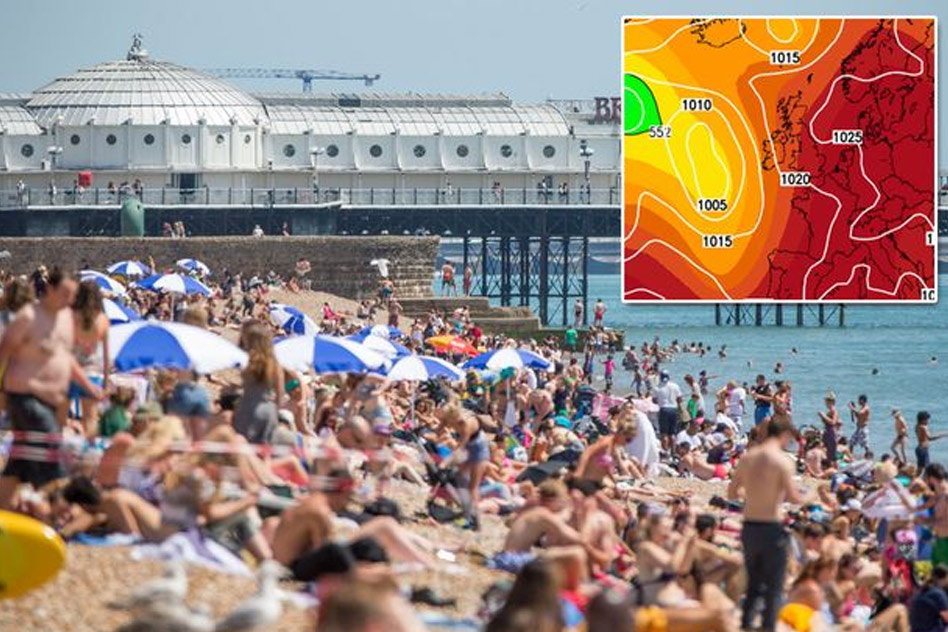
Ongoing Global Heatwave Is Setting All-time Hottest Temperature Records All Over
13 July 2018 12:42 PM GMT
According to reports, countries across the globe are experiencing one of the most intense heat events ever seen in human history. As many locations in the northern hemisphere recorded high temperatures in the past week, the Climate scientists are worried. In his latest blog post, Meteorologist Nick Humphrey said that the extreme spell of hot weather amounted to “a true roasting”, melting ice covering the Arctic Ocean, adding, “It is incredible and one of the most intense heat events I’ve ever seen for so far north.” According to Humphrey, even northern Siberia, known for its cold weather, “has been getting blowtorched” with maximum temperatures of above 32 degrees C.
Humphrey made these comments after he interpreted a heat map from the University of Maine’s Climate Reanalyzer. Climate Reanalyzer is a platform to visualise the global climate and provide 10-day forecasts across the world. It was developed by the University of Maine and the National Science Foundation, USA.
What is happening around the globe?
Castlederg in Northern Ireland on June 29, hit a record high of 30.1 degrees C. Temperatures in Tbilisi, Georgia, and Yerevan, Armenia, rose this week to 40.5 degrees C and 42 degrees C respectively. In the USA, heat levels in Denver, Colorado soared to an all-time high of 40.6 degrees C on June 28. In Quriyet, Oman, on June 26, the lowest temperature over the 24-hour period was a sweltering 42.6 degrees C – making a new record for highest “low”, according to Guinness World Records. Canada’s Quebec province’s largest city Montreal recorded its record high of 36.6 degrees C on July 2.
British citizens have been warned to expect ongoing high temperatures as it was announced the country would be seeing the longest unbroken spell of hot weather since 1976. They are expected to match the record set 42 years ago, where at least one weather station recorded over 28 degrees C for 18 consecutive days. While in the UK the heatwave had pushed the mean temperatures for last month up to 14.8 degrees C, making it the third warmest June since 1910.
Burlington, in Vermont, recorded its all-time high ‘low’ temperature of 80°F (27°C) within the 24 hour period on July 2. Yerevan, in the previously Soviet state of Armenia, saw temperatures soar to 107.6°F (42°C). Ottawa posted its most extreme combination of heat and humidity on July 1. The islands in Western Europe and Eurasia smouldered in the heatwave. The host country of the FIFA World Cup this year, Russia is also in the midst of a heatwave and several spots across the south of the world’s largest country either matched or exceeded their warmest June temperatures.
What does this mean?
Mr Humphrys explains how climate change has sent temperatures skyrocketing in the far north of the planet over the past 20 years. This can be seen in the rapid rise in wintertime temperatures. However, now it’s increasingly being reflected in summertime temperatures as well. As a result of such high temperatures, more and more sea ice disappears earlier in the season, leaving the dark blue ocean to absorb more daytime sunlight.
This heating of the ocean surface by low albedo (more solar energy absorbed by earth) causes faster warming of the Arctic region as compared to mid-latitudes. This phenomenon is known as Arctic Amplification.
Why should we be worried?
According to reports, the experts in climate change and global warming are getting increasingly concerned. Reportedly, Dr Jennifer Francis, a research professor, found that Arctic Amplification is causing an abrupt weakening of the polar jet stream (jet streams are high altitude, fast flowing, narrow currents of air that carry warm and cold air across the planet). The weakening is causing the polar jet to become much wavier, with greater wave ‘ breaks’. These blocking patterns lead the waves to sit in the same place for weeks and promote extreme weather patterns. This results in extreme cold relative to normal as well as extreme heat, very wet, and drought conditions.
Mr Humphrey warns that due to the increase in this kind of intense heat events hitting the Arctic at the height of summer, more rapid destruction of land permafrost will happen. This ultimately will lead to more carbon dioxide and methane to be released into the atmosphere, speeding up global warming and resulting in even faster climate change.
A heat wave in a region or a country can be considered as an anomaly, however, the scale of this global heatwave is a flashing-red danger signal.
Also Read: Desperate Plea To Save The Planet; 15,000 Scientists Write A Letter To Warn People
 All section
All section













